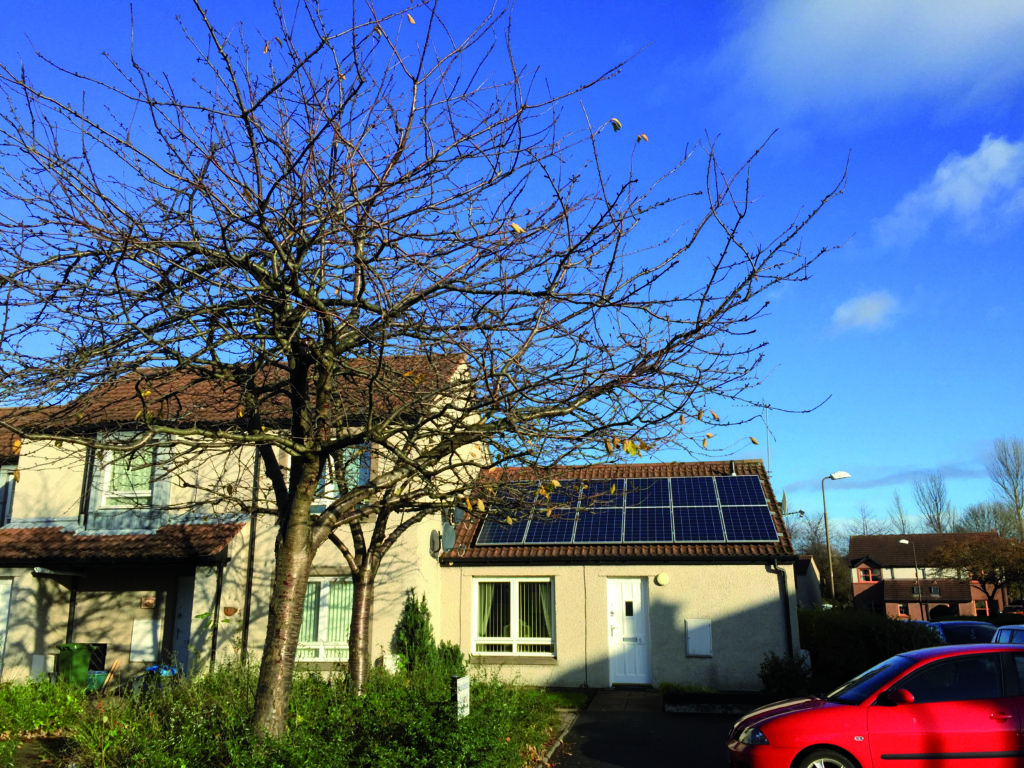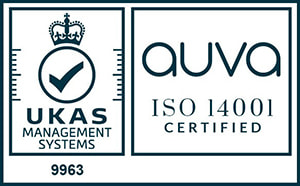
Sunamp PV
Circa 2010-12, solar PV was the business to be in if you were renting a roof, or had the money to invest in solar panels, and reap the generous Feed-in Tariffs (FiTs) rewards. Four years on, despite FiTs reductions and the Government’s inconsistent approach
to its green policies, solar PV is alive and well. According to DECC figures published in March 2016, PV capacity stood at 9,213 MW across 867,876 installations, an increase of 62% year-on-year, with the main driver (75% of capacity) being small scale, 0 to 4 kW, schemes.
Housing associations and local authorities recognised early on that solar PV could help alleviate fuel poverty, but East Lothian Housing Association (ELHA) has gone one step further and is making sure its tenants can benefit even when the sun doesn’t shine. We all know that any energy generated during daylight hours and not used is effectively lost to the tenant; it can’t be accessed and is exported to the grid instead. This sorry state of affairs will shortly be a distant memory for 80 households in East Lothian, thanks to tech entrepreneur Andrew Bissell.
Energy on tap
Bissell is the creator and CEO of SunampPV, a heat battery that can store the energy generated by solar PV, and deliver hot water without the need for a hot water cylinder and immersion heater. Now this energy can be used when you come home from work, return from holiday, during the Winter months when daylight hours are shorter and, importantly, to provide hot water even during a power cut.
ELHA’s Duncan Mackay said, “We were delighted to be involved in this project. The additional benefits to our tenants were the main driver, however, all providers of social rented housing will be aware of the need to meet the new energy standards. The SunampPV heat battery is part of the solution and one which our engineers were able to get to grips with very quickly.”
Punching above its weight
SunampPV doesn’t just store the energy, it delivers fast-flowing hot water on-demand. It’s unique in this respect as the heat battery contains an innovative material, developed with the University of Edinburgh, that enables it to store four times more energy than hot water tanks, but it’s also very compact – no bigger than a cabin-sized suitcase – and can be floor mounted, fitted in a small kitchen unit, in a cupboard or in the garage. The battery heats the water to a selectable temperature between 35-55°C, and provides the equivalent of 90-138 litres of hot water, plenty to fill a bath or run several showers.
The right combination
It works well with a combination boiler for delivery, in fact no other PV-driven, hot water system is compatible with a combination boiler, which was good news for Dutch boiler manufacturer Intergas. It was selected earlier this year to partner SunampPV and East Lothian Housing Association in a trial programme.
Bissell was especially impressed by the boiler’s heat exchanger. “This heat exchanger is amazing; it’s a high performance product that’s condensing all the time and it can take a pre-heated feed up to 85°C. When the water temperature coming from SunampPV starts to drop, the Intergas boiler progressively modulates up to maintain the desired temperature. It doesn’t need a special ‘solar valve’ to work with SunampPV either, which is another saving in both cost and space.”
As the Intergas boiler does not have a diverter valve or secondary hot water plate heat exchanger, the preheated hot water passes straight through its heat exchanger to the hot tap; it won’t fire unless the temperature of the pre-heated water has gone down.
Energy saving solution
Bissell estimates that as much as 75% of annual domestic hot water can be provided free of charge with this type of solution. The ‘self-consumption’ of PV energy within the home can be raised from 30% (with PV only) to over 70% (with SunampPV), a great benefit to the tenant that justifies the decision to install PV on ELHA’s homes. The additional efficiency of the Intergas boiler rounds out the total energy saving package.
The Intergas Eco RF model, with built-in remote management software, is replacing old gas fires and back boilers, so that SunampPV can monitor the performance of the whole installation. (SunampPV already has GSM monitoring on its own equipment.)
Speaking about their collaboration, Stephen Zouch, managing director, Intergas Heating, said, “Andrew’s vision is to help individual homes and buildings become more self-sufficient, and to make substantial cost savings for the householder and business owner. Our boilers work seamlessly with SunampPV to provide the most energy efficient hot water delivery system.”
Social housing providers are fully focused on reducing fuel poverty and, if their tenants have solar PV installed, then the SunampPV/Intergas collaboration will deliver a longer term energy saving solution.






